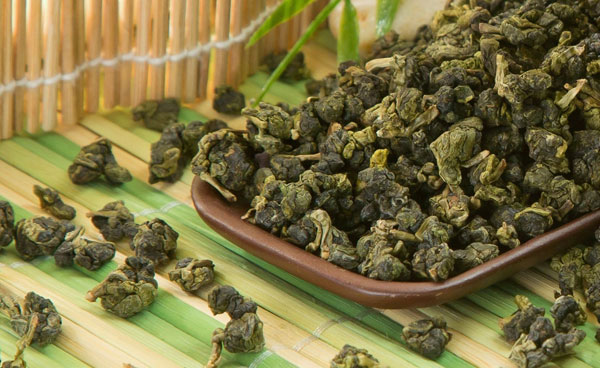& laquo; Oolong & raquo; & mdash; this is the European version of the pronunciation of the Chinese word & laquo; ulun & raquo;, which means & laquo; Black dragon & raquo;.
Oolongs (oolongs) occupy an intermediate place between unfermented green teas and fully fermented black teas. The fermentation rate of classical oolong is 40-50%.
Oolongs (oolongs) are most often produced from mature leaves (rather than young ones) harvested from adult tea bushes.
Oolong has a very pleasant original spicy aroma that sets it apart from other types of tea. By the presence (content) of essential oils in the tea leaf, oolong tea is unparalleled.
Appearance of Oolong tea & ndash; How to Buy It Right
Finished oolongs & mdash; exclusively leaf teas. If under the guise of oolong you are offered to buy small-leaf tea (broken), then this is waste or fake.
Dry cups of oolong tea & mdash; large, twisted, dark brown (chestnut, sometimes red-brown) colors with a characteristic strong & laquo; spicy & raquo; aroma. These are whole sheets, twisted into lumps, dense to the touch, which unfold during brewing, almost tripling in volume.
Oolong tea leaf is fermented unevenly & ndash; there is strong fermentation on the edge of the leaves, and fermentation in the center of the leaf is weak, like green teas. Therefore, the taste of oolong tea combines the sophistication of green tea and the astringency of black (red).
Oolong can be purchased from our online store :
Oolong with berries and fruits
We sell tea directly from the manufacturer.
View the full range of oolong tea here
Making the right tea
When brewing, Oolong (oolong) gives a dark red infusion.
Brewing Oolong & mdash; very delicate process, because it strongly depends on the variety of tea, more precisely, on the degree of its fermentation.
If Oolong is little fermented, for example, about 20-30% as & nbsp; Teguanyin , then its brewing conditions are closest to brewing green teas & mdash; hot water (60 & deg; - 80 & deg; C), brewing time 1-3 min.
Heavily fermented oolong (like Taiwanese oolong or Da Hong Pao ) brew a little longer: 2-5 min.
After brewing, high-quality oolong has pronounced specific characteristics that do not allow it to be confused with other types of tea.
The highest quality oolong has a strong and rich floral aroma and a wonderful peach flavor.
The peculiar taste of oolongs is very strong, sometimes they even say that oolong & mdash; & laquo; sharp & raquo; and & laquo; spicy & raquo; tea.
The color of the brew is very diverse: from pale jade (like green tea) & mdash; through dark golden & mdash; to dark red.
Varieties of manufacture
No more than three dozen varieties of oolongs can be bought and actively exported worldwide. Among them are the most famous:
Formosa Oolong |
Grown and manufactured in Taiwan, named after the province in which it is grown. It is considered the best quality (and affordable price!) Among the oolong (in addition, it can be bought at the most affordable price. When properly brewed, it has a golden yellow color (first brew), and that is why Taiwanese oolongs are often called & laquo; champagne teas & raquo;. |
Iron Guan Yin (Te Kuan Yin or Tai Guan Yin) |
Magnificent Chinese oolong, no worse, and sometimes better than Taiwanese oolong. The color of the brew is pinkish to gold, the peach taste is pronounced, the aroma is rich; after drinking tea, a specific honey taste (aftertaste) remains in the mouth. Tea has been known since the 17th century, grown mainly in Fujian province. Famous for withstanding up to 7 brews when using the Chinese traditional gunfu-cha procedure. |
Buy Oolong Tea: Key Producers
The most prominent producers of oolongs are China (Fujian) as well as Taiwan (Formosa).
